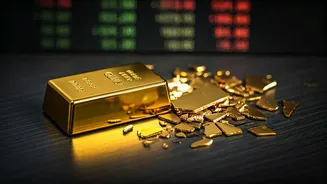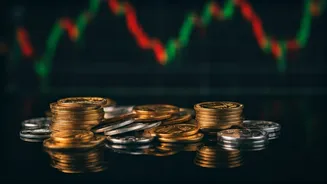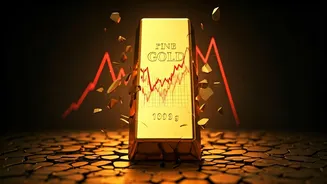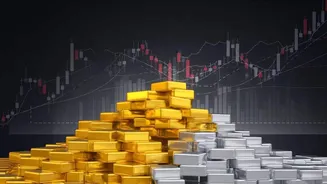Market's Sharp Drop
The gold market recently experienced a pronounced downturn, with prices plummeting over 5% in a single day. This fall constitutes the most significant
one-day drop since 2013, signifying a noteworthy shift in market dynamics. Simultaneously, silver also faced a considerable decline, plunging by 7%. This kind of event often prompts speculation among investors and analysts alike, seeking to understand the underlying causes and potential future impacts on the market and related investment portfolios. Such significant changes in the prices of precious metals warrant closer scrutiny, especially for those involved in investments or those tracking market movements, as they influence investment strategies and risk assessments, requiring a deeper comprehension of the market dynamics that influence the values of these assets.
Why the Decline?
While the exact reasons for the day's decline aren't explicitly stated in the provided context, the magnitude of the fall suggests the presence of significant market forces. Several factors usually influence gold prices. These can include shifts in currency values, changes in investor sentiment, movements in global economic indicators, and policy changes by major financial institutions. External events and global factors could also have significantly contributed to the sharp decrease observed. These elements interact in complex ways, with their combined effect causing fluctuations in the gold market. Investors, in particular, keep a keen eye on developments like these to adjust their strategies.
Investor Reactions
The market's sharp drop typically leads to varied reactions from investors. Some investors might choose to sell their gold holdings, fearing further declines, which can increase downward pressure on prices. Others could view the dip as an opportunity to buy gold at a lower price, believing the metal will rebound in value. Different investment strategies, like hedging and portfolio diversification, are usually reevaluated during such periods. The degree of response depends largely on each investor's risk tolerance, investment goals, and their perception of market conditions, leading to differing actions in response to the price drop. These dynamics can further shape the course of the market, potentially either accelerating the downward trend or setting the stage for a recovery.
YTD Performance Review
The context provided does not specify the year-to-date performance of gold. However, by knowing the current price drop, investors can compare and analyze the present performance of the precious metal. Evaluating the historical data helps in understanding the present market’s movement and its long-term stability. Monitoring these trends helps to determine the price movement from the start of the year until the present day, providing key insights that can be helpful for making investment decisions. This enables investors to grasp the current scenario and make better judgments based on the yearly financial performance.
What to Watch?
Looking ahead, several elements will influence the gold market. Investors should observe currency movements, particularly the strength of the US dollar, as it typically has an inverse relationship with gold prices. Economic data releases, such as inflation figures and employment numbers, can provide insights into market sentiment. Statements from central banks, and changes in monetary policy, are essential as they can significantly impact investor confidence and, consequently, gold prices. Monitoring these elements will assist in anticipating potential trends and making more informed decisions in the fluctuating gold market. Staying updated on the current happenings and global factors is key to investment decisions.












